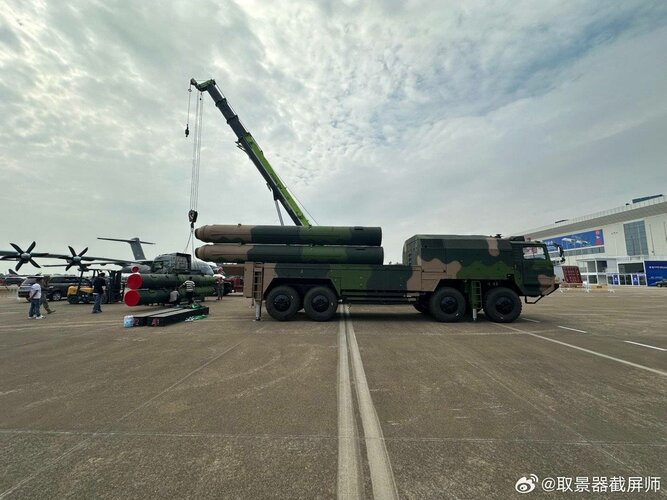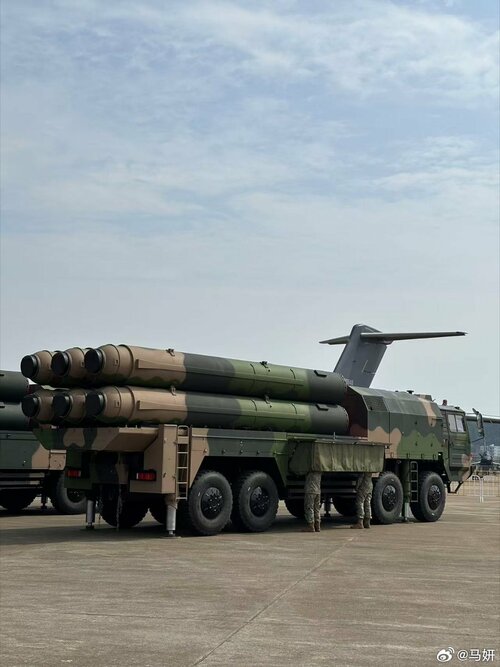- Joined
- 3 June 2011
- Messages
- 18,343
- Reaction score
- 12,255
Trident said:What do China's early warning capabilities look like? Surely they must have atleast a rudimentary radar network, even if an operational ABM system is absent?
The Finnish authorities have impounded an Isle of Man-flagged ship bound for China with undeclared missiles and explosives, officials say.
Police are questioning the crew of the MS Thor Liberty after what were described as 69 Patriot anti-missile missiles were found aboard.
Interior Minister Paivi Rasanen said the missiles were marked "fireworks".
The MS Thor Liberty had docked in the Finnish port of Kotka after leaving Germany last week.
Dock workers became suspicious after finding explosives poorly stored on open pallets, and the missiles were then found in containers marked "fireworks".
A spokesman for Germany’s Defense Ministry said the missiles were an official shipment that was fully declared and had all necessary clearings from German authorities.
“Those Patriot guided missiles are from the Bundeswehr’s stocks and have been shipped to South Korea” according to an intergovernmental treaty, he said, declining to be named in line with government policy.
Finnish customs are investigating the case as one of illegal export of defence material.
A German defence ministry spokesman said the Patriot missiles, produced by US firm Raytheon, came from the German military and were destined for South Korea.
He said it was a "legal sale on the basis of an accord between two states at the government level". He said the transaction had received an official export authorisation and was reported to customs authorities.
However Finland said Friday it had not received the paperwork required from Germany.
Sixty-nine Patriot missiles impounded in Finland after being found on a merchant vessel in mid-December were headed for South Korea, the Finnish government said Wednesday, granting their transit through Finnish territory.
"The missiles in question had been sold to the Republic of Korea by Germany," the government said in a statement, adding that it had granted a licence to Seoul's "Defence Acquisition Programme Administration to transit through Finnish territory 69 Patriot missiles."
The surface-to-air missiles, produced by US firm Raytheon, were discovered on December 15 aboard the British-registered Thor Liberty docked in the southeastern Finnish port of Kotka.
Government officials on Wednesday said they had studied the case and decided to grant the Korean Defense Acquisition Program Administration a re-export license. It has until the end of August to ship the missiles from Finland.
"There was no reason to delay anymore," Finnish Defense Minister Stefan Wallin said. "Everything is in order."
RyanCrierie said:China just did another ABM test, it appears to be an exo-atmospheric midcourse intercept. Here's a Xinhua article posted a little bit earlier:
Background information of mid-course interception missile
Xinhua/Globaltimes.cn | January 28, 2013 18:35
The mid-course interception missile is actually comprised of a large booster rocket and interception warhead. The booster is like a carrier rocket, which sends the warhead into the atmosphere while the warhead of the mid-course interceptor is the equivalent of a “small missile”.
This “small missile” is equipped with dynamic, tracking and target recognition systems. The dynamic system drives the warhead and locks its target; the guidance system compiles its targets data, especially infrared signature. These systems track and identify the target, ultimately guiding the warhead to intercept the oncoming projectile.
The most technologically-advanced component of the missile defense system is the interception warhead. In order to reduce its size the structure was designed to be as small as possible. Since accuracy is of the utmost importance, the guidance system is highly sensitive to movement and finely tuned to maintain a lock on its target.
Employing a fast-burning conflagrant booster rocket is necessary in order to deliver the warhead into the atmosphere as rapidly as possible. However, maintaining accuracy at such high speeds is very demanding. If the margin of error goes beyond the comfortable range of the guidance system, the missile may fail to reach its target.
Besides, the mid-course anti-missile system does not only have missiles but also a powerful early warning and monitoring network, which can be used in actual combat.
A ballistic missile reaches mid-course very quickly after being launched. If the system wants to intercept the missile mid-way, it has to identify its target, track and compute its trajectory as fast as possible. After launch, the anti-ballistic missile then is quickly launched and fired on course to release the interception warhead.
Building a perfect mid-course anti-missile interception system is a very complicated project and requires a powerful early warning and monitoring system. The key component of this early warning and monitoring system is a missile early-warning satellite.
RyanCrierie said:I'm not quite sure. KEI was very bleeding edge.
They might be using a more energetic propellant solution or faster burning motor for their first stage than is US/Russian custom for GBI or Galosh; because of the unique conditions that China faces for ABM.
RyanCrierie said:I'm not quite sure. KEI was very bleeding edge.
They might be using a more energetic propellant solution or faster burning motor for their first stage than is US/Russian custom for GBI or Galosh; because of the unique conditions that China faces for ABM.
sferrin said:I wonder what kind of performance Spartan might have had if they'd swapped out that heavy 5 Mt warhead with a KKV.
China successfully conducts test of land-based mid-course anti-missile interception technology
On the evening of April 14, 2023, China conducted a test of land-based mid-course anti-missile interception technology in its territory, and the test achieved the expected purpose. This test is defensive and not directed at any country.

It is not intended to rival the current THAAD system (it is more like the THAAD-ER concept instead) and is neither new ( it had been around for a couple of years when we first got a sight of it and varying rumors suggest that it has been in service since ~2016-ish or 2020 at latest).
China’s new HQ-19 surface-to-air missile system aims to rival US THAAD with advanced interception capabilities
China’s new HQ-19 surface-to-air missile system aims to rival US THAAD with advanced interception capabilitiesarmyrecognition.com


I am not sure those tires are 1.4 in diameter. If they are, people would be quite tall, like close to 1.9 m tall.
Of course, knowing exact tire model or truck model would help tremendously in sizing up the missiles.
On another forum I did the measurement assuming 1.75 m height of the people and got something like 5.85 m long containers, 0.65 m wide. (excluding the gas canister at the bottom of the container)
